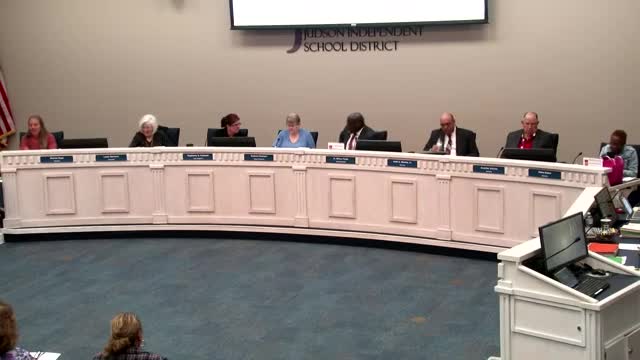School Enrollment Crisis Sparks Debate on Middle School Consolidation
November 22, 2024 | JUDSON ISD, School Districts, Texas
This article was created by AI summarizing key points discussed. AI makes mistakes, so for full details and context, please refer to the video of the full meeting. Please report any errors so we can fix them. Report an error »

In a recent government meeting, concerns were raised regarding the projected student enrollment and capacity of middle schools within the district. According to data from a demographer, the anticipated enrollment for the upcoming year is 4,545 students, which would only fill 59% of the district's middle school capacity, significantly below the board's goal of 80 to 90%. Projections indicate a slight increase over the next six years, yet even by the 2029-2030 school year, the district would still be operating at only 64% capacity.
A critical issue highlighted was the transition from 5th to 6th grade, which has historically resulted in significant student loss—150 and 190 students in the last two years alone. The potential impact of school voucher programs on enrollment was also noted, raising further concerns about maintaining six middle schools under these circumstances.
The discussion included comparisons with surrounding districts, revealing that the average middle school size in neighboring areas is considerably larger than the district's projected average of 758 students. This discrepancy raises questions about the viability of keeping smaller schools open, especially as research suggests that larger schools tend to have better academic outcomes. In fact, 64% of schools with over 900 students received an A or B rating, compared to only 21% of smaller schools.
Financial efficiency was another focal point, with data showing that smaller schools incur higher per-pupil expenditures. For instance, the smallest middle school costs $14,269 per student, while the largest costs $11,383. The difference in costs could be redirected towards essential educational resources, such as tutoring and after-school programs.
The meeting concluded with a call for further examination of middle school consolidation options, as the current trajectory suggests that maintaining the status quo may not align with the district's educational and financial goals.
A critical issue highlighted was the transition from 5th to 6th grade, which has historically resulted in significant student loss—150 and 190 students in the last two years alone. The potential impact of school voucher programs on enrollment was also noted, raising further concerns about maintaining six middle schools under these circumstances.
The discussion included comparisons with surrounding districts, revealing that the average middle school size in neighboring areas is considerably larger than the district's projected average of 758 students. This discrepancy raises questions about the viability of keeping smaller schools open, especially as research suggests that larger schools tend to have better academic outcomes. In fact, 64% of schools with over 900 students received an A or B rating, compared to only 21% of smaller schools.
Financial efficiency was another focal point, with data showing that smaller schools incur higher per-pupil expenditures. For instance, the smallest middle school costs $14,269 per student, while the largest costs $11,383. The difference in costs could be redirected towards essential educational resources, such as tutoring and after-school programs.
The meeting concluded with a call for further examination of middle school consolidation options, as the current trajectory suggests that maintaining the status quo may not align with the district's educational and financial goals.
View full meeting
This article is based on a recent meeting—watch the full video and explore the complete transcript for deeper insights into the discussion.
View full meeting
